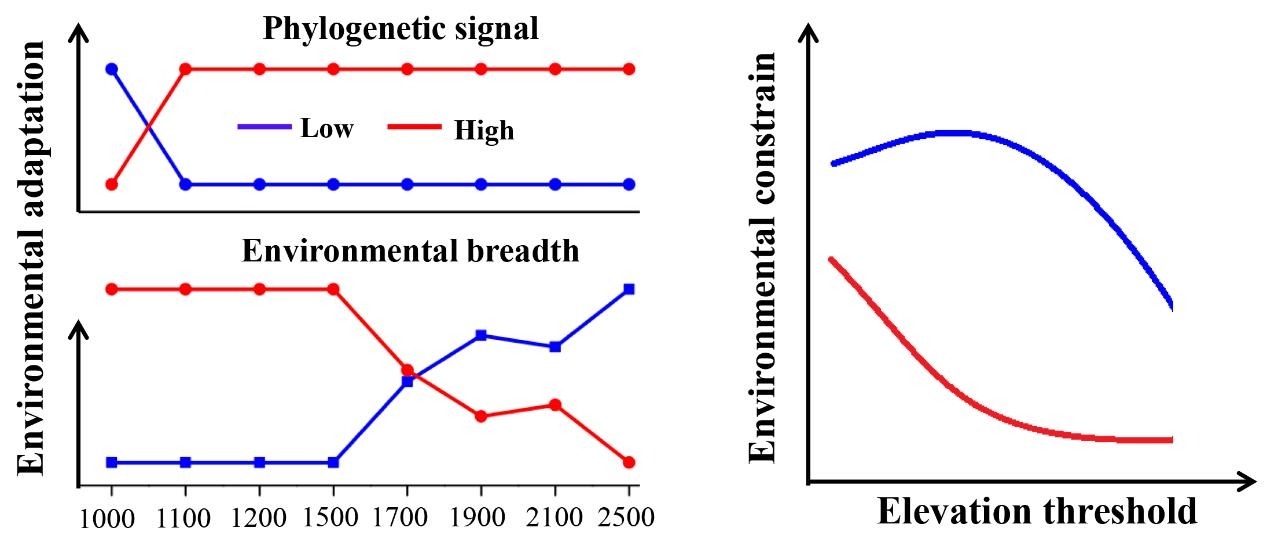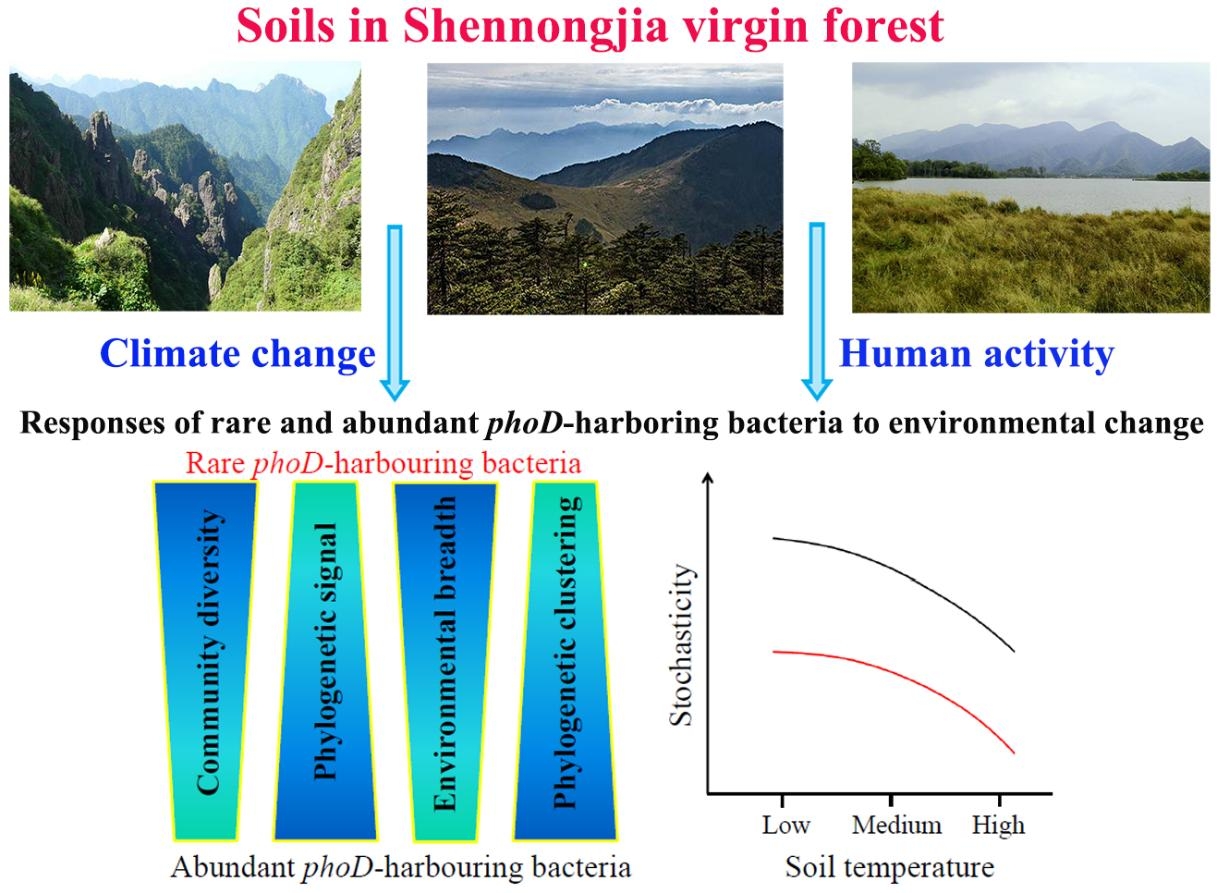
Forests, considered as the lungs of the planet, are momentous ecosystems for breeding biodiversity, regulating climate, fixing carbon, providing woods, and stabilizing soils. However, forest soils display phosphorus (P) deficiency pervasively, which in turn limits plant productivity and ecosystem functions. The input of P into forest soils is mainly derived from the decomposition of parent organic phosphorus-containing materials (e.g., plant residues and animal droppings).
The phoD gene, encoding alkaline phosphatase, is used to reflect organic P mineralization. Therefore, deciphering geographical distribution and diversity maintenance of phoD-harboring bacteria is important for understanding diversity-driven ecosystem processes and functions.
A research team consisted of Associate Prof. WAN Wenjie and Prof. YANG Yuyi from the Wuhan Botanical Garden of the Chinese Academy of Sciences and Prof. HE Donglan from the South-Central University for Nationalities has determined community composition and diversity of phoD-harboring bacteria along with environmental gradient in the Shennongjia primeval forest.
The researchers applied multiple statistical analysis methods to calculate environmental breadths, phylogenetic signals and community assembly processes. In addition, they also investigated relationships between community diversity and soil ecosystem multifunctionality.
In terms of altitude, the researchers found higher community diversity, broader environmental breadths, and stronger phylogenetic signals of phoD-harboring bacteria at high elevations (> 1,500 m) than at low elevations (< 1,500 m).
According to the researchers, stochastic processes dominated community assembly of phoD-harboring bacteria at high elevations, whereas stochastic and deterministic processes mediated community assembly of phoD-harboring bacteria at low elevations.
Additionally, the phoD-harboring bacterial community is less environmentally constrained. The researchers verified the robustness of the conclusions based on biotic diversity characteristic from seven elevation thresholds in the forest. And additional analysis indicates that the results are robust.
By considering rare and abundant taxa, the researchers found that abundant phoD-harboring bacteria exhibit closer phylogenetic clustering and stronger phylogenetic signals, while rare taxa display higher community diversity and broader environmental breadths. Stochasticity dominates community assemblies of both rare and abundant phoD-harboring bacteria, and soil temperature adjusts the balance between stochastic and deterministic processes.
The results emphasize that rare phoD-harboring bacteria present stronger environmental adaptation at the taxonomic level, whereas abundant taxa exhibit stronger environmental adaptation at the phylogenetic level.
Consequently, taxonomic α-diversity of rare rather than abundant phoD-harboring bacteria contributes significantly more to soil ecosystem multifunctionality, whereas phylogenetic α-diversity of abundant taxa displays significant effect on soil ecosystem multifunctionality.
The findings extend knowledge of the diversity maintenance of phoD-harboring bacteria and decipher diversity-driven soil ecosystem functions in the Shennongjia primeval forest and clarify important ecological roles of phoD-harboring bacteria in forest ecosystem, which might guide the formulation of environmental protection measures for forests, especially the Shennongjia primeval forest.
The researches were funded by the National Natural Science Foundation of China, the Fundamental Research Funds for the Central Universities, and the Open Fund of Key Laboratory of Urban Land Resources Monitoring and Simulation of the Ministry of Natural Resources of China.
Results have been published in Geoderma and Science of the Total Environment, respectively.

Environmental adaptation and environmental constraint of phoD-harboring bacteria at low elevations and high elevations (Image by WBG)

Conceptual models revealing environmental response and stochasticity in the community assemblies of rare and abundant phoD-harboring bacteria under the influence of soil temperature (Image by WBG)

86-10-68597521 (day)
86-10-68597289 (night)

86-10-68511095 (day)
86-10-68512458 (night)

cas_en@cas.cn

52 Sanlihe Rd., Xicheng District,
Beijing, China (100864)

